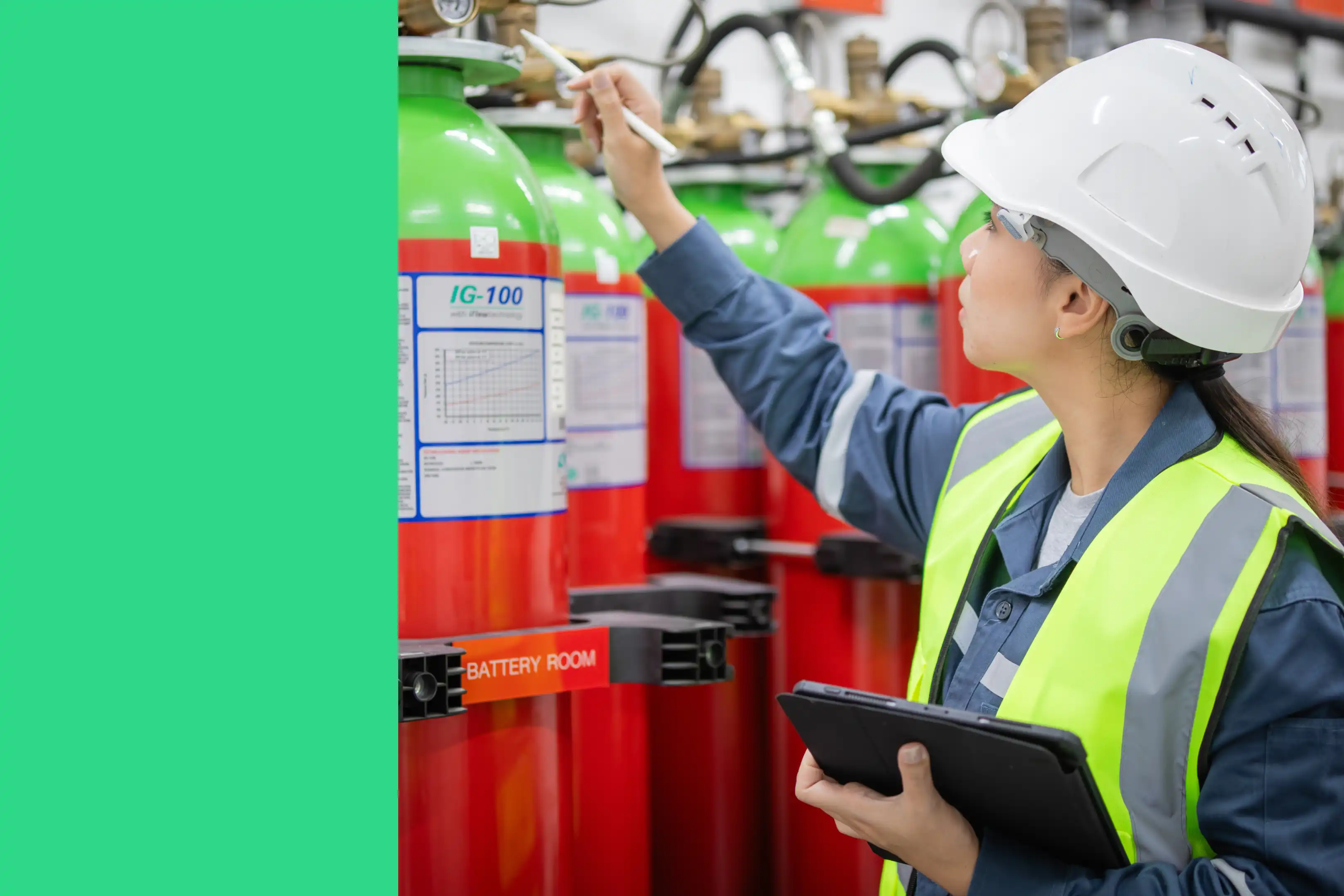
As a maintenance professional, you know that unplanned equipment failure and downtime are the enemies of productivity and profitability. That's why smart maintenance planning is so critical for driving ROI. While preventive maintenance can help manufacturers avoid many major issues, it can't eliminate all breakdowns.
Predictive maintenance takes your maintenance to the next level by using data and advanced analytics to predict impending equipment failure. By relying on real-time sensor data, machine learning, and condition monitoring, PdM (predictive maintenance) addresses problems at just the right time. This allows your team to minimize surprises and fix issues before they cause costly downtime.
In short, a proactive predictive maintenance strategy keeps your operations running smoother and more efficiently, which translates into real cost savings. It delivers value in four key areas for your facility:
- Significantly reduces machine downtime
- Boosts operational efficiency
- Extends equipment life
- Reduces production delays, improving capacity, on-time delivery, and customer satisfaction
We’ll explore each of the benefits and show you how you can leverage PdM to optimize your maintenance programs and increase ROI.
Key Takeaways
- Predictive maintenance reduces costs by preventing unplanned downtime and catastrophic failures, with manufacturing downtime potentially costing your facility up to $150,000 per hour.
- Unlike calendar-based preventive maintenance, predictive maintenance uses real-time sensor data and machine learning to identify the optimal time for maintenance, leading to longer equipment lifespans, improved reliability, and more efficient allocation of labor and resources.
- When you implement predictive maintenance, you'll improve key performance indicators, including overall equipment effectiveness (OEE), mean time between failures (MTBF), and planned maintenance percentage (PMP).
- To create a successful predictive maintenance program, you need to prioritize your critical assets, establish condition thresholds, leverage sensors with automation, and continuously monitor and refine your system based on performance data.
Predictive vs. preventive maintenance
Preventive maintenance and predictive maintenance are both proactive strategies, but they differ in approach.
Preventive maintenance (PM) is routine, scheduled service. For example, your team inspects or services equipment every few weeks or months, regardless of its current condition. The goal of PM is to fix or replace parts before a failure based on time or usage intervals. This helps reduce failures. In fact, about 87% of industrial facilities practice preventive maintenance to minimize downtime and optimize equipment lifespan.
Predictive maintenance, on the other hand, relies on actual machine condition data and advanced analytics to determine when your team needs to perform maintenance. Instead of servicing a machine every 30 days, PdM uses real-time data to predict when a component is showing signs of wear or an impending failure. You collect this data from condition monitoring systems, like IoT sensors, performance monitors, vibration analysis, and temperature readings. Your team then performs maintenance only when needed, such as right before a failure is likely to occur.
This timing difference is key: Predictive maintenance intervenes at the optimal moment, whereas preventive maintenance follows a fixed schedule.
According to the 2025 State of Industrial Maintenance Report, 71% of companies claim to use preventive maintenance in their strategy, but less than 35% actually spend most of their time on it. In practice, organizations often use a mix of strategies. For your less critical assets, a simple preventive or even run-to-failure approach might suffice, while critical equipment relies on predictive maintenance for maximum reliability.

Benefits of predictive maintenance management
When you implement predictive maintenance in your facility, you'll see several key advantages:
- Reduced downtime and costs: Unplanned downtime can cost manufacturing facilities up to $150,000 per hour. Predictive maintenance minimizes these losses by using sensors and condition-monitoring techniques to detect potential failures before they occur. When issues are identified early, repairs can be scheduled during planned downtime windows, avoiding emergency repair costs like overtime labor, expedited shipping, and third-party specialists. This proactive approach also prevents the cascading damage that occurs when minor issues (like a failing bearing) evolve into major failures (like a broken motor).
- Extended equipment lifespan: Predictive maintenance allows for timely intervention by identifying issues early, such as a compressor running hot or a gearbox showing abnormal vibration patterns. This approach ensures critical components are replaced at optimal intervals: not too late that they cause damage, but not too early to waste useful life. The result is equipment that operates closer to peak condition throughout its lifecycle, with improved reliability metrics like mean time between failures (MTBF) showing fewer and more widely spaced failure events.
- Improved efficiency and safety: Well-maintained equipment consistently runs at its designed speed and produces higher-quality output, boosting overall equipment effectiveness (OEE) by enhancing all three OEE components: availability, performance, and quality. From a safety perspective, predictive maintenance reduces the risk of sudden equipment failures that could create hazardous situations, such as a press breaking mid-operation or an electrical failure causing a fire. In turn, you provide a safer working environment for all personnel.
- Smarter inventory management: Predictive maintenance transforms spare parts management from guesswork to precision. By forecasting which components will likely fail and approximately when, maintenance teams can stock exactly what they need without tying up capital in excess inventory. This balanced approach is proving critical: 59% of facilities that successfully reduced unplanned downtime expenses identified improved MRO inventory management as the primary factor, demonstrating how predictive insights directly impact operational readiness and bottom-line results.
How to create an effective predictive maintenance schedule
Implementing predictive maintenance requires solid data and clear processes. Here are the practical steps to set up an effective predictive maintenance schedule:
- Inventory your assets: Start by listing all equipment in your facility and identifying your critical assets—those whose failure would cause the most serious production, cost, or safety impacts. Create a detailed asset registry including make, model, age, and maintenance history. Using a computerized maintenance management system (CMMS) or enterprise asset management (EAM) system can help with organizing this information.
- Determine priorities: Not every machine needs full predictive monitoring. Analyze which equipment would benefit most from PdM based on its importance to production, repair costs, and history of problems. Equipment that is less critical or nearing end-of-life might remain on a simpler preventive or reactive maintenance plan.
- Identify ideal maintenance intervals and conditions: For each priority asset, determine what to monitor and when maintenance should occur. Define condition thresholds that will trigger maintenance actions by reviewing manufacturer recommendations and your maintenance records to understand typical failure modes. Decide which condition metrics to track. Common conditions include vibration, temperature, oil quality, and pressure.
- Leverage sensors and automate work orders: Install the necessary monitoring systems to gather data for your predictive program. This might include vibration sensors, temperature probes, or power consumption monitors connected to your CMMS. Modern maintenance management systems can integrate with sensor data to automatically create work orders when conditions indicate potential issues.
- Monitor performance and refine the program: Once your predictive maintenance systems are in place, track relevant KPIs to evaluate effectiveness. Is the mean time between failures increasing? Is unplanned downtime decreasing? Review how accurately your predictive alerts are identifying real issues, and adjust thresholds as needed. The goal is to continuously improve the program based on real performance data.
By following these steps, your team can implement predictive maintenance that maximizes reliability while optimizing resource use.
Predictive maintenance tips for improving KPIs
Key performance indicators (KPIs) are vital for measuring the success of any maintenance strategy. Predictive maintenance, when done right, will improve many of your maintenance KPIs. Here are some tips for leveraging PdM to boost important metrics and drive better performance:
Focus on reducing unplanned downtime
Track downtime events and their causes in your CMMS. After implementing PdM, you should see total machine downtime hours drop and asset availability improve. Create dashboards to visualize these improvements and identify remaining problem areas.
Improve mean time between failures (MTBF)
A well-implemented predictive maintenance program should extend the interval between failures as issues are addressed before they cause breakdowns. Monitor this metric for critical assets to confirm your PdM program is working effectively.
Track planned vs. reactive work orders
Measure your planned maintenance percentage (PMP), the percentage of total maintenance activities that are scheduled rather than reactive. As your predictive maintenance program matures, you should see a higher proportion of planned work and fewer emergency repairs.
Boost overall equipment effectiveness (OEE)
Predictive maintenance primarily improves OEE by increasing equipment availability and maintaining performance. Track OEE before and after implementing PdM interventions to demonstrate their value in keeping production running at the designed speed and quality.
Leverage advanced analytics
Modern PdM tools with machine learning can identify failure patterns that might not be obvious. Use these insights to refine your monitoring approach and maintenance timing. When decisions are data-driven, your KPIs will improve more rapidly.
By applying these tips, maintenance professionals can use predictive maintenance not just to maintain the status quo but to optimize operations. The result is a data-informed maintenance process where improvements in KPIs like downtime, MTBF, OEE, and maintenance cost are clearly visible and quantifiable.
Are you ready to increase ROI with predictive maintenance?
Predictive maintenance is a proven approach to boost reliability, safety, and financial performance in manufacturing. By investing in these advanced maintenance technologies and practices today, you’re positioning your organization for greater efficiency and success tomorrow. In short, predictive maintenance can be a game-changer for your ROI. The only question remaining is: Are you ready to increase ROI by working smarter, not harder, with predictive maintenance?
FAQs
What are the benefits of predictive maintenance?
Benefits of predictive maintenance include lower maintenance costs, fewer breakdowns, extended equipment lifespan, better safety, and more efficient use of resources through condition-based maintenance planning.
What is the primary advantage of using predictive maintenance over traditional methods?
The primary advantage of predictive maintenance over traditional methods is its ability to determine the optimal time for maintenance based on real-time equipment condition data rather than fixed schedules, ensuring repairs happen only when truly needed while still preventing failures.
What is the major benefit of preventive maintenance?
The major benefit of preventive maintenance is reducing equipment failures through routine, scheduled servicing based on time or usage intervals. About 87% of industrial facilities use preventive maintenance because it minimizes downtime and optimizes equipment lifespan through regular, proactive care.









